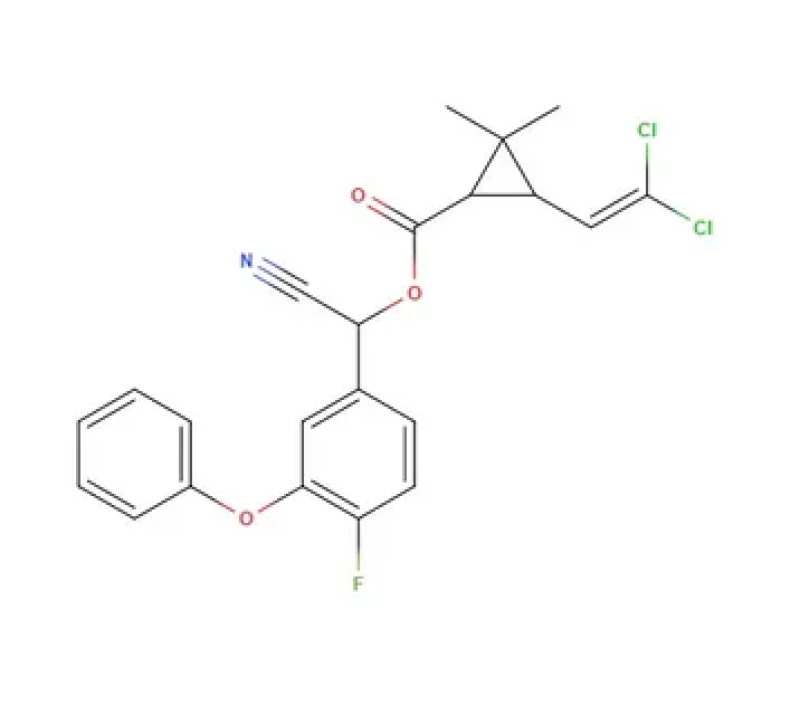Beta-Cyfluthrin is a widely used synthetic pyrethroid insecticide known for its broad-spectrum efficacy in agricultural and public health sectors. As concerns about crop protection and pest control continue to rise globally, understanding the properties, applications, and market trajectory of Beta-Cyfluthrin is critical for manufacturers, distributors, and end-users alike.
Understanding Beta-Cyfluthrin’s Chemical Properties And Mechanism Of Action
Beta-Cyfluthrin belongs to the pyrethroid family, characterized by its synthetic origin and potent insecticidal activity. It acts on the nervous system of insects, interfering with the sodium channel function in nerve cells. This disruption prevents normal nerve signal transmission, leading to paralysis and eventual death of the pests. Beta-Cyfluthrin exhibits both contact and stomach poison properties, making it highly effective against a wide variety of insect species including aphids, beetles, and caterpillars.
Its chemical stability under different environmental conditions enhances its residual activity in agricultural fields, providing prolonged protection. Beta-Cyfluthrin’s low water solubility minimizes runoff, reducing contamination risks in aquatic ecosystems compared to other insecticides. These properties contribute significantly to its preference over older, less specific insecticides in crop protection programs.
Key Agricultural And Public Health Applications Of Beta-Cyfluthrin
In modern agriculture, Beta-Cyfluthrin is widely used to control pests in major crops such as cotton, cereals, fruits, and vegetables. It effectively manages resistant pest populations due to its novel mode of action, which is crucial in integrated pest management (IPM) systems. Its systemic action allows for absorption and translocation within plants, enhancing its efficiency in guarding against pest infestations.
Beyond agriculture, Beta-Cyfluthrin plays a vital role in public health by controlling disease vectors like mosquitoes and flies. Vector-borne diseases such as malaria and dengue fever demand robust control measures, where Beta-Cyfluthrin’s fast knockdown effect and prolonged residual action make it an indispensable component of indoor residual sprays and mosquito nets treatments. This dual role reinforces its commercial importance across diverse sectors.
Environmental Impact And Safety Profile Of Beta-Cyfluthrin
The environmental safety of Beta-Cyfluthrin is a significant consideration for regulatory bodies and end users. Despite its effectiveness, the insecticide exhibits relatively low toxicity towards mammals when used according to recommended guidelines. However, its high toxicity to aquatic organisms and beneficial insects such as bees requires careful management and adherence to environmental safety protocols.
Manufacturers and regulators advocate selective usage, timing, and application techniques that minimize unintended effects on non-target species. Research continues to optimize formulations to enhance biodegradability and reduce environmental persistence while maintaining insecticidal performance. This balance is critical in ensuring sustainable use within ecosystems vulnerable to chemical exposure.
Commercial Demand And Regulatory Landscape Influencing Beta-Cyfluthrin Market
The growing global demand for crop protection solutions has driven substantial commercial interest in Beta-Cyfluthrin products. Factors such as increased agricultural output, rising awareness of vector-borne diseases, and resistance management strategies have contributed to steady market growth. Crop producers constantly seek effective, versatile insecticides with proven efficacy profiles, placing Beta-Cyfluthrin among the preferred choices.
Regulatory frameworks surrounding Beta-Cyfluthrin vary regionally, with rigorous evaluations to ensure safety and efficacy before market approval. Stringent residue limits, environmental regulations, and public health guidelines influence product formulations and market availability. Companies are investing in research and development to align with evolving standards, focusing on eco-friendly formulations and improved delivery mechanisms.
Navigating Detailed Research Reports On Beta-Cyfluthrin Market Dynamics
For stakeholders seeking comprehensive data on Beta-Cyfluthrin's market segmentation, competitive landscape, and forecast analysis, specialized market research reports provide in-depth insights. These reports encompass global and regional trends, pricing analysis, supply chain dynamics, and technological advancements related to Beta-Cyfluthrin-based products.
Accessing such detailed industry intelligence supports informed decision-making in product development, investment strategies, and marketing initiatives. The reports also evaluate emerging opportunities and challenges within the Beta-Cyfluthrin sector, reflecting the impact of regulatory changes and shifting consumer preferences. Businesses aiming to capitalize on current trends benefit from this granular market intelligence and actionable insights.
Future Outlook And Innovations Driving Beta-Cyfluthrin Applications
The future of Beta-Cyfluthrin is closely linked to ongoing innovations in formulation technology and integrated pest management approaches. Advances like microencapsulation, nano-formulations, and controlled-release systems promise enhanced efficacy, reduced environmental footprint, and improved user safety. These innovative delivery mechanisms address key industry demands for sustainability and efficiency.
Furthermore, the integration of Beta-Cyfluthrin into precision agriculture platforms facilitates targeted applications, optimizing dosages and minimizing waste. Collaborations between agronomists, chemists, and environmental scientists are driving the development of formulations resistant to photodegradation and suitable for diverse climatic conditions. These innovations ensure Beta-Cyfluthrin remains a relevant and robust tool in combating pest challenges worldwide.
Beta-Cyfluthrin stands as a critical asset in modern pest control, combining scientific efficacy with commercial versatility. Understanding its chemical nature, applications, safety considerations, and market environment enables stakeholders to navigate the complexities of this insecticide’s role in agriculture and public health. Detailed research reports further assist in exploring granular market data, empowering strategic business decisions tied to Beta-Cyfluthrin’s evolving landscape. This comprehensive perspective underscores the ongoing significance and potential future growth of Beta-Cyfluthrin in pest management worldwide.
Get This Report in Japanese Language: ベータ-シフルトリン
Get This Report in Korean Language: 베타-사이플루트린
Read More Articles Related to this Industry- Recent Developments in Beta Glucan Landscape
About Author:
Ravina Pandya, Content Writer, has a strong foothold in the market research industry. She specializes in writing well-researched articles from different industries, including food and beverages, information and technology, healthcare, chemical and materials, etc. (https://www.linkedin.com/in/ravina-pandya-1a3984191)
